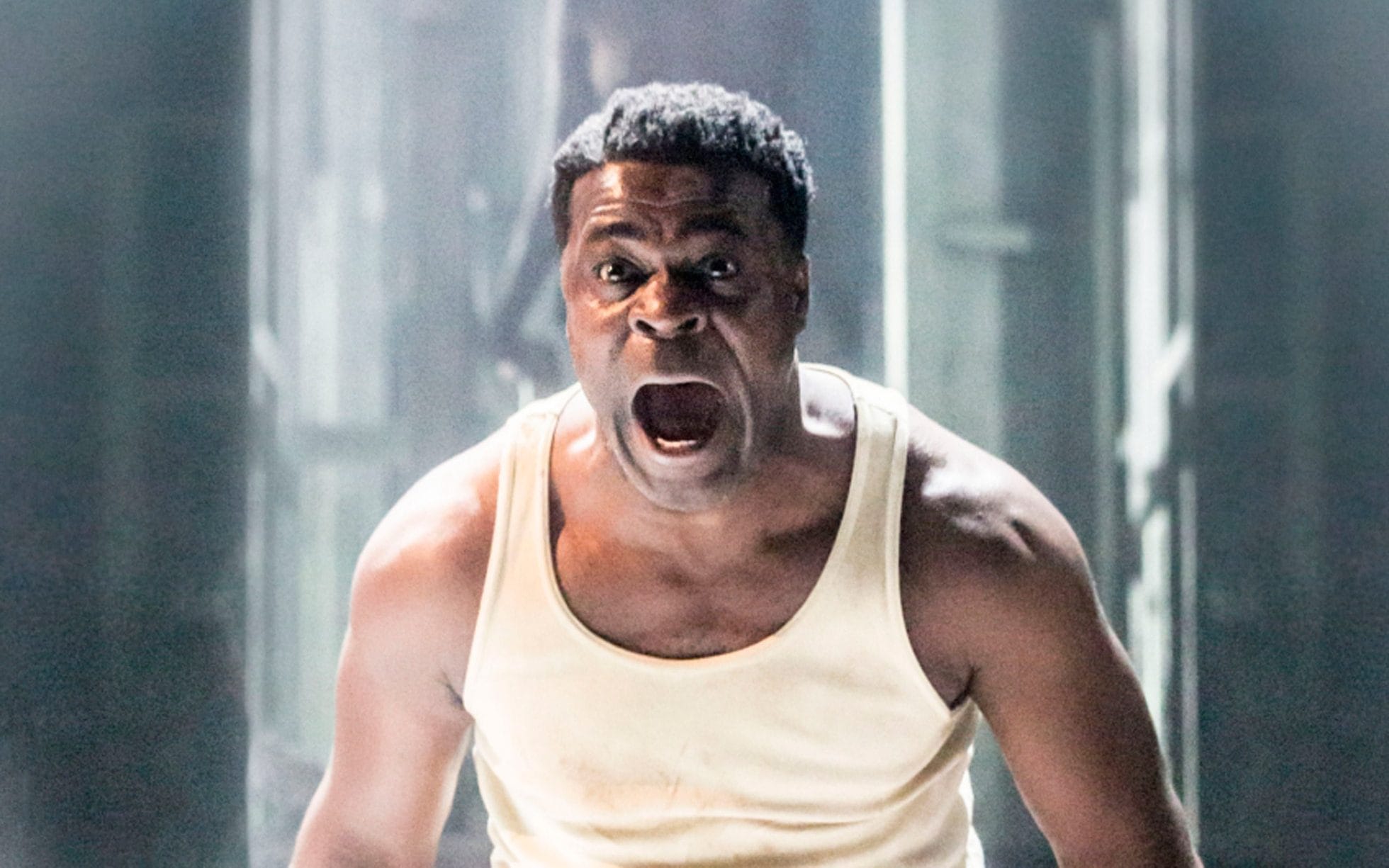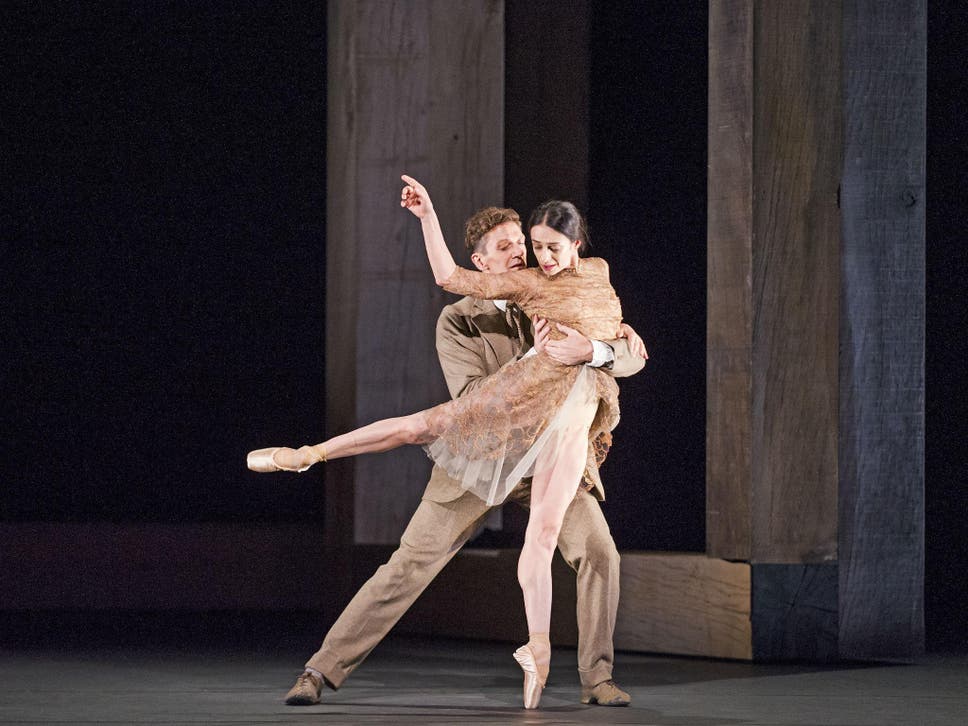VIEWPOINTS – Streaming Diary: Sparring LA BOHEMEs, a rare revival of Lorraine Hansberry’s LES BLANCS, and a pair of important full-length ballets
- By drediman
- July 13, 2020
- No Comments
This past week, I continued my streaming of performing arts content. Here are my latest thoughts.

Michael Fabiano and Nicole Car in the Royal Opera’s production of Puccini’s “La Bohème”.
OPERA
Last week, I streamed a pair of relatively recent performances of one of the most beloved operas of all time, Giacomo Puccini’s La Bohème. Coincidentally, both starred ardent American tenor Michael Fabiano in the role of the impoverished, lovestruck writer Rodolfo. The first production was the Metropolitan Opera’s hugely scaled, painstakingly realistic staging (RECOMMENDED) by Franco Zeffirelli. As one of the Met’s iconic and most-performed productions, it’s inevitable that some casts would be stronger than others. Luckily, the 2018 revival boasted a particularly fine company. Co-starring opposite Mr. Fabiano as the tragic heroine Mimì was Bulgarian soprano Sonja Yoncheva, whose rich, plush tone melted my heart at nearly every turn (the revival also featured sturdy work from American opera talents Lucas Meachem and Susanna Phillips as the fiery couple Marcello and Musetta). Mimì is an ideal role for Ms. Yoncheva’s affectingly straightforward performance style, and her interpretation of the role was lovely in the traditional sense, which works beautifully within the framework of Mr. Zeffirelli’s painterly production.
Then there’s Richard Jones’s divisive 2017 Royal Opera production (RECOMMENDED), which I was also able to stream. Mr. Jones’s La Bohème de-emphasizes the work’s realism, which is a striking move. By stripping his staging of a good amount of period detail (a common trait amongst Mr. Jones’s typically impressionistic, stylized productions), the director seems keen to expose the raw emotions at the opera’s heart. Of the cast, Australian soprano Nicole Car seemed most attuned with this approach. Her Mimì, although less charismatic than Ms. Yoncheva’s, was the more dramatically daring of the two performances, conveying real desperation from that first fateful knock on the door of Rodolfo’s bachelor pad. The luxurious premiere Royal Opera cast also included accomplished Polish baritone Mariusz Kwiecień as Marcello and vibrant British-Romanian soprano Simona Mihai as Musetta. As Rodolfo, Mr. Fabiano, with his dashing matinee idol good looks and robust (if slightly grainy) tenor voice, admirably managed to anchor the two very different productions. His quirkier performance for the Royal Opera gets my vote for the more effective just by a margin, however. Both maestros Marco Armiliato (at the Met) and Antonio Pappano (at the Royal Opera) did Puccini’s immortal score proud with readings that unabashedly pulled on the heartstrings.

Danny Sapani in the National Theatre’s revival of “Les Blancs” by Lorraine Hansberry.
THEATER
Theater-wise, I caught two webcasts of note last week. The first was a filmed performance of Lorraine Hansberry’s rarely-performed Les Blancs (“The Whites”) (RECOMMENDED), which was revived last year by London’s National Theatre and which I caught via NT at Home. Unfortunately, the 1970 play – which Ms. Hansberry considered the most important of her career – was to be the playwright’s final work for the stage. Set in a fictional African country in the process of invoking revolution, the prescient Les Blancs bravely explores colonialism and its wide-reaching implications. On the page, much of the play reads like an intellectual debate, and therefore lacking the dramatic fireworks of A Raisin in the Sun, Ms. Hansberry’s most recognizable play. Smartly, the National has paired the play with South African director Yaël Farber, whose productions have been marked by their intense atmosphere, heightened emotional stakes, and pungent ritualism. The strategy worked beautifully — Ms. Farber and her impassioned cast have imparted Les Blancs with these aforementioned traits, resulting in a mostly riveting theatrical experience, even through the camera lens.
Later in the week, I also streamed the made-for-Zoom production of Tartuffe (RECOMMENDED) – Molière’s classic play about religious hypocrisy – courtesy of Molière in the Park. Directed by Lucie Tiberghien, the theater company’s founding artistic, the endeavor must be commended for employing gender- and color-blind casting to impressively seamless effect. However, after viewing a number of plays in this still-developing hybrid format, I have to say my feelings continue to be mixed. Yes, there’s a certain charming scrappiness to it all, but I miss the actual “play” that occurs between actors sharing the same space, not to mention the artistic contributions of theater’s various design elements (set, costumes, lighting, sound, etc.). Nevertheless, ultimately eclipsing these creeping frustrations was the performance of Tony-nominee Raúl Esparza in the title role. Despite the virtual stage, the ideally-cast Mr. Esparza practically bursts through the fourth wall with a characteristically maximalist performance that chewed up the proverbial scenery.

Gary Avis and Alessandra Ferri in the Royal Ballet’s production of Wayne McGregor’s “Woolf Works”.
DANCE
This week, I streamed two important, relatively new full-length (or “evening”-length) works of dance. First up was Woolf Works (HIGHLY RECOMMENDED), British choreographer Wayne McGregor’s Olivier Award-winning three-act ballet for the Royal Ballet. As indicated by the title, the 2015 work is inspired by the life and writings of Virginia Woolf, particularly her novels Mrs. Dalloway, Orlando, and The Waves. By weaving the inner life of the iconic writer with themes from her literary works, Mr. McGregor has created a sustained and fascinating pseudo-narrative meditation on identity, time, and reality. Much of the credit must also go to Max Richter’s pulsating, cinematic score (written specifically for Woolf Works), which works in perfect harmony with Mr. McGregor’s choreographic vision. Together – along with their team of first-rate designers – they’ve created a piece of dance theater that’s challenging and altogether memorable. But the lynchpin, at least in the webcast I viewed, was the casting of fabulous ballet star Alessandra Ferri, who at 52 (at the time of the work’s premiere) was able to emerge from retirement in compelling fashion, hauntingly capturing the essence of the probing mind and mystery of the writer at the center of the ballet. It was a profoundly moving performance. Once we emerge from covid, I hope Woolf Works finds its way across the pond – hopefully with Ms. Ferri – in relatively short order.
Lastly, I finally caught up with renowned hip-hop dance master Rennie Harris’s Lazarus (HIGHLY RECOMMENDED) for Alvin Ailey American Dance Theater, albeit via webcast. Choreographed just in 2018, the piece was heralded almost immediately as a major addition to the revered dance company’s repertoire. Through subtle progressions in movement styles and visual cues (e.g., costuming), the piece poetically depicts the gamut of the Black experience in this country, time traveling fluidly from slavery, to the Civil Rights movement, to the community’s current day predicaments. Particularly affecting is Mr. Harris’s regular reversion to the stooped position, which succinctly suggests ongoing oppression and racial inequality. But Lazarus, in the end, is a defiantly hopeful ballet. Indeed, the work ends triumphantly – upright and proud – in hip-hop technicolor, an unmistakable contemporary nod to Revelation‘s gorgeously uplifting final movement.

 Copyright © 2025
Copyright © 2025
Leave a Reply